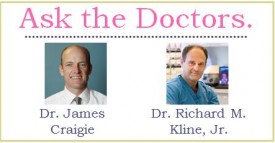 This week, Dr. James Craigie of The Center for Natural Breast Reconstruction answers your question.
This week, Dr. James Craigie of The Center for Natural Breast Reconstruction answers your question.
Question: I had right breast ductal carcinoma, Stage 2. Two out of 22 lymph nodes had cells. I did a gene test, and had both chemo and radiation. The expanded radiation destroyed it. I had a mastectomy in Charleston, and now I’m ready to have my breasts fixed. I don’t want to have implants. I’d rather have a reconstruction using my own body fat and tissue. What are my options?
Answer: Hi — I’m sorry you’ve had so much trouble, and hopefully things will continue to improve for you. Your history of radiation fortunately has no bearing on our ability to do a reconstruction using only your own tissue. Many of our patients initially had failed implant reconstructions elsewhere, only to be later successfully reconstructed with their own tissue. Please feel free to come by for a consultation if you live locally, or, if you’d rather, we can arrange a phone consultation. Thanks for your inquiry, have a great day!
Dr. James Craigie
Center for Natural Breast Reconstruction
Have a question about breast reconstruction or post-surgical care you’d like answered from our surgical team? Just ask us!









 The following question is answered by Dr.James Craigie of
The following question is answered by Dr.James Craigie of 




